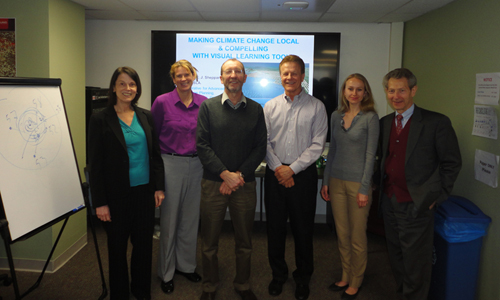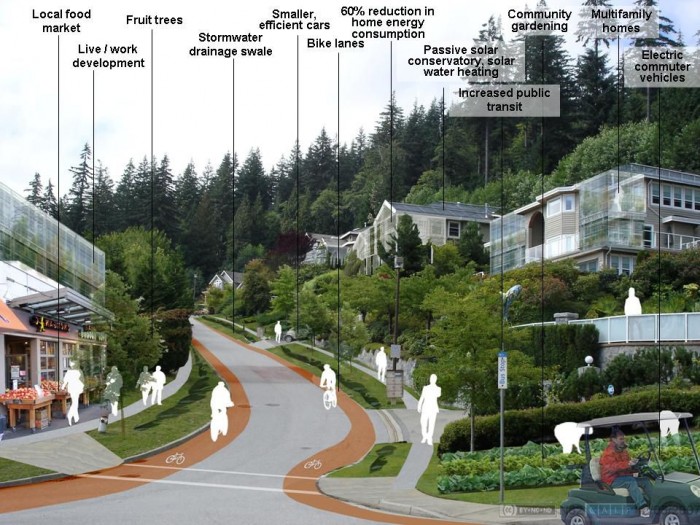
EEM faculty and students participated in a symposium entitled "Making climate change local and compelling with visual learning tools" on April 24, 2014. Professor Stephen R.J. Sheppard, director of the Collaborative for Advanced Landscape Planning Program at the University of British Columbia, Vancouver, British Columbia, presented the symposium, which generated a lively discussion among environmental and energy faculty throughout the university.
During the symposium, Professor Sheppard explained how the systematic use of visualization techniques can help communities see local effects of climate change, adapt to its impacts, and reduce their contributions to its causes — while improving their quality of life.
One big problem with the climate change phenomenon involves the process of communicating climate change, something that is very difficult for the average person to comprehend. To act on climate change, citizens must see the connections between where and how they live and all aspects of climate change — causes and mitigations and impacts and adaption — and they must connect with the decision-making processes through which their community will respond to climate change.
Without engaging this bigger picture, individual decisions about insurance policies and building options — which are responses to just one possible impact of climate change and no response at all to the causes — might actually exacerbate the problem they are meant to address.
To draw and fill-in this bigger picture, Professor Sheppard has developed a set of visualization techniques and planning strategies that communities can use to envision and deliberate about possible futures with climate change. These techniques run from the simple (e.g. point-and-shoot photography) to the very complex: the 3D visualizations made possible by computer-aided data analysis and graphic design. Prof. Sheppard also has developed other state-of-the-art means of communicating climate change impacts, such as web videos, a video game, training modules, and an e-book.

Prof. Sheppard's innovative communicating techniques about climate change vividly bring to life both the science and the practical solutions for climate change, such as local renewable energy and flood protection. He introduces powerful new visual tools (from outdoor signs to video-games) for communities, action groups, planners, and other experts to use in engaging the public, building awareness and accelerating action on the world’s greatest crisis.


